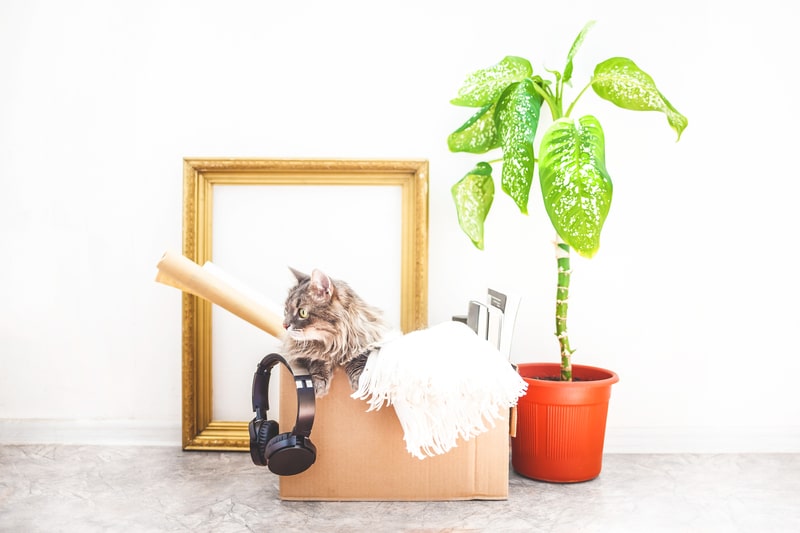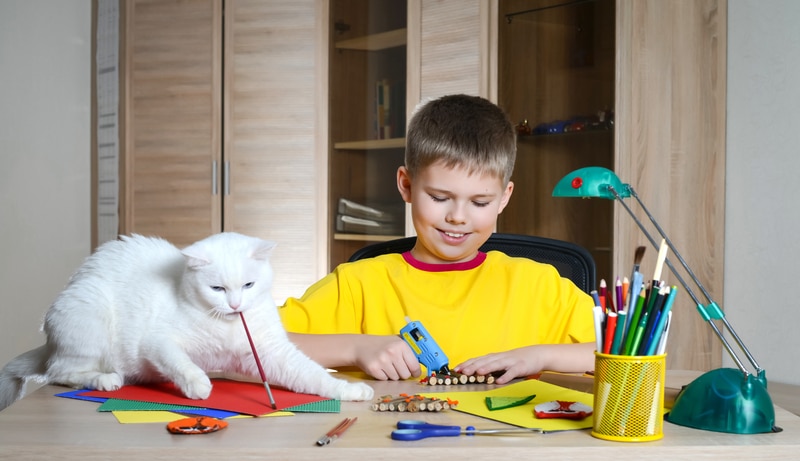Relocating and bringing cats into a new home takes work for you and the cats. Cats are well known for being territorial animals; they are also creatures of routines and might get overwhelmed by the changes and the confusion of a moving process. It is, therefore, our responsibility as cat parents to ensure that the cats are taken through moving from the old house to the new one without as much fuss as possible. This article takes you step by step from before the move to the day of the move and shows you how to acclimate your cat to the new space.
Some General Guidelines to Follow Before You Move House with Your Pet
Updating the Cat’s Information
Check that your cat’s collar and microchip contain correct and up-to-date information, including your new address and contact details. This is important, especially if your cat disappears during the diet shift. It enhances the chance of finding a pet if it gets lost in the new area that you have relocated to.
Creating a Safe Haven
Designate a quiet room in your current house where your cat can retreat to when the packing activity increases. This room should contain all the cat’s essentials like food, water, a litter box, and their favourite toys or bed. A familiar space will help reduce stress and anxiety in your cat during the packing period.
Try Not to Change Your Packing Pattern
Some tips will help you prepare your cat for the move and prevent stress: Keep the same schedule. This includes feeding, play, and other activities your cat would do. Cats are also sensitive and require a stable environment; this way, your cat can cope with the change.
Use of Pheromone Diffuser
Try to use a feline facial pheromone diffuser in the area that is the cat’s safe zone. Pheromones will also fight off stress and anxiety in your cat. The diffuser releases a scent that mimics the pheromone found in a cat’s facial region to create a feeling of comfort and relaxation in your cat.
Moving Day
On the day you relocate your cat, keep it in the haven with its necessities. This will help it not interfere with the moving process, get injured, or run out of the house due to the confusion that comes with it.
When You Get to Your New Home
Safe Space for Your Cat
When you move into your new house, create a small space for your cat that is as comfortable as the one you made in your old home. This will be their haven until they leave the rest of the house.
Ensure that you Make the Whole House Escape Proof
Before you let your cat out, scrutinise every corner of the house. Ensure all the windows, doors, and other openings are closed, and the cat cannot hide in a place you cannot access.
Keep Routines the Same
As usual, keep your cat feeding, playing, and doing other activities at the new house. It will also help to have this familiar pattern during this change so that your cat feels more comfortable.
Removing Their Toys and Enrichments
If you want your cat to be comfortable in the new environment, this will include its toys, beds, and scratching posts. Bringing items with your cat’s scent to the new environment is an excellent idea to help your cat feel more comfortable.
Scent-swapping
Scenting is vital to the cat. Wiping the cloth and then the furniture you bought and stroking the cat with the same cloth can help the cat associate the furniture with the cat’s scent.
Register with Vet
Ensure that you select a local vet and enrol with them immediately after you find a new place to live. This will help you prepare for future situations or diseases with your cat.
Keep the Cat Indoors
You should keep your cat indoors for a few weeks to adapt to the new environment. This can help it attempt to return to the previous home from which it was evicted.
Cats in New Home
How do you acclimate a cat to a new house during a move?
First, it is recommended that the cat be allowed to roam about in a single room at a time. Oversee these explorations to avoid pertinent accidents. It’s essential not to pressure the cat to investigate; it should do it at its own pace.
A cat can become comfortable in a new home for up to a year.
The degree to which it does so is quite different with each cat. Some may take one week to avoid the changes, while others may take several weeks or months to change. Try not to rush and give them comfort and stability during this time.
Ways of Telling That Your New Cat is Settling In
Indicators of a cat’s successful adjustment include: Indicators of a cat’s successful adjustment include:
- Proper intake of food and hygiene, especially regarding issues with the bathroom.
- Exploration of the house.
- The child should have a regular sleeping pattern and play at the right time.
You will then notice that they may engage in everyday activities as they regain their usual self, including scratching, playing, or even seeking attention.
Outdoor Access and Safety
Cats and moving house—the first time they can go outside—When taking your cat outside for the first time after moving house, ensure it is relaxed indoors. Firstly, it is recommended to take it out for a limited duration in the presence of someone and then gradually increase the duration as it adapts.
How to Relocate with Your Cat and Make the Process as Painless as Possible with the Assistance of Mover
Professional movers acquainted with moving households with pets will significantly help driving with a cat. They can offer specialised carriers, pet-friendly transport, and many other services to help you and your feline friend make a smooth move.
The Consequences of Moving
Such changes in cats’ behaviour after a move should be noticed, as they may happen. Some of the symptoms associated with anxiety disorders are changes in eating and sleeping patterns, aggressiveness, or fearfulness. These behaviours may point towards stress or anxiety, and it is best to check with your veterinarian if your pet displays any of these behaviours.
Post-move Play and Interaction
Try spending more time with the cat and playing with it more often. This will also help make the new territory cheerful and establish new protocols. This is particularly good for cats, especially when they are being transferred to a new home or even a new environment.
Post-move Monitoring
Pay close attention to your cat’s behaviour in the days and weeks following the move. Some signs you should consider include changes in the eating and elimination pattern, signs of weight loss, and behavioural changes.
One should also be keen to notice if the cat is trying to return to your previous home, especially if you have relocated to another house within the same region. Cats have been seen attempting to return to the last territory they were taken from, which is quite dangerous, especially if the area is busy with many roads.
Emotional Support
However, cats are also Domestic animals, which means they can be affected by changes in their environment or schedule. This can be very important, especially in helping the cat cope with the change of environment.
Some ways include giving your cat more attention, giving it a comfortable place to lie or sleep, and talking to it calmly. As I mentioned earlier, your cat will be able to determine your feelings, so ensure you are always relaxed and cheerful.
In Conclusion
It is challenging to move house with a cat, but there are ways to ensure the cat adapts well to the new home.
Every cat has a different personality and will respond to movement in its manner. Some cats may take time to get used to a new environment, which requires patience on the owner’s part.
Preparation, managing stress and anxiety before or during the move, and caring for your cat afterwards can help ensure a smooth transition.
Note that the love and patience you give your cat will be the most important in helping it get used to the new environment. The following will help your cat feel secure and comfortable and can help the cat accept the new home as its own.
If your moving home soon and require removals services in the Bristol area, be sure to contact Excalibur Removals for a five star service and moving experience.


